Stourbridge glass artists on their diverse inspirations and local pride
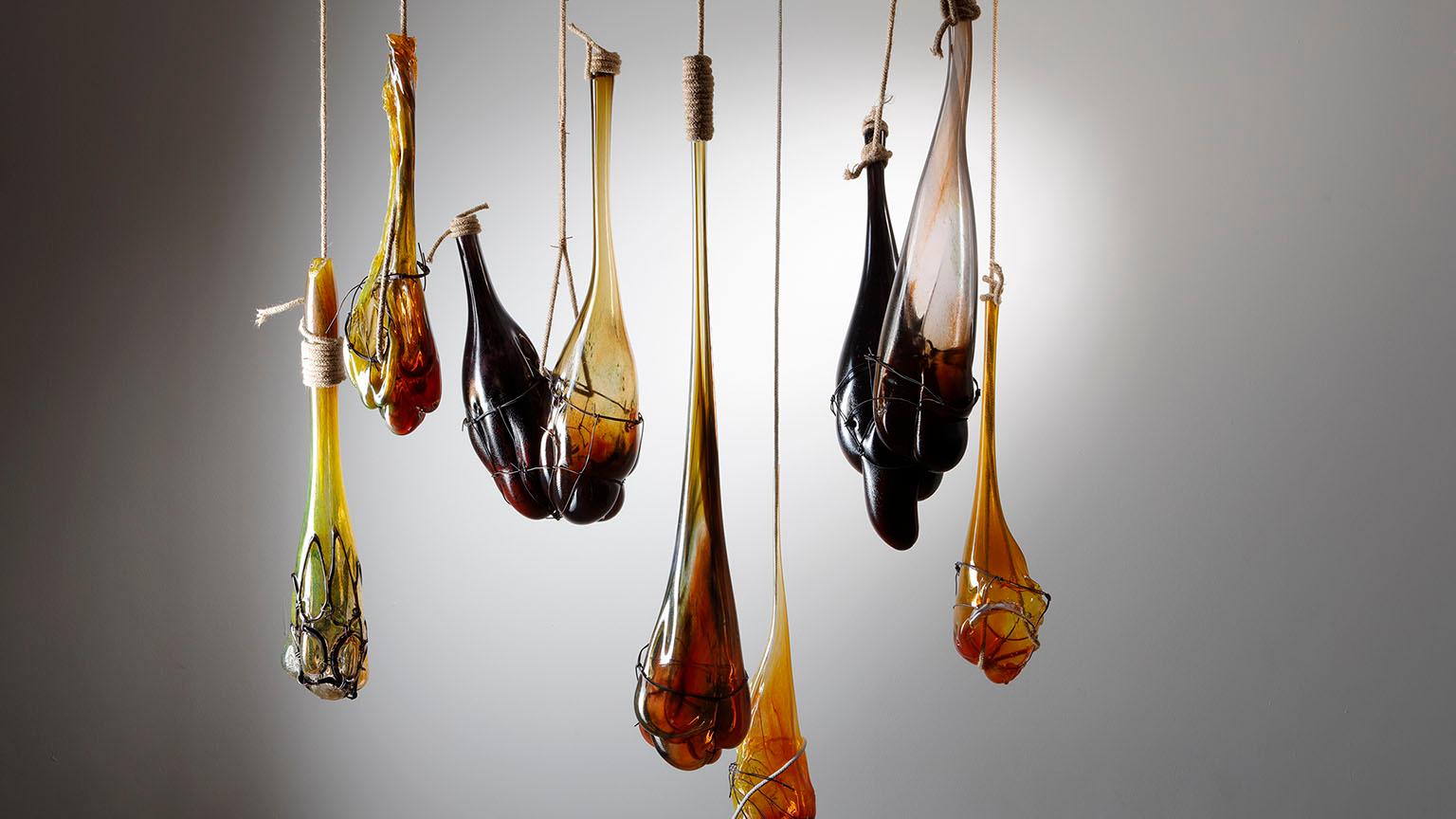
To celebrate the opening of the Stourbridge Glass Museum, Skye Sherwin asks four glass artists with connections to the area what working with the medium means to them.
A version of this article first appeared in the spring 2022 issue of Art Quarterly, the magazine of Art Fund.
Vic Bamforth
What was your journey into becoming a glass artist?
I began working with the medium later in life when I enrolled on an evening class with my brother, in 2000. My formative years were spent travelling. From first stepping into the glassblowing studio and touching the glass I knew there was something different about it. I thought this could be addictive, but in a healthy, positive and life-changing way. The heat, the clanking of metal, the glow from the glory hole and the furnace: it’s very seductive stuff.
Do you work in a particular technique or area of expertise?
I call it painted graal. The original traditional Swedish graal technique involved building up successive different colours of glass and then cutting through them to reveal the colours underneath. That would then be covered with clear glass from the furnace. Abstract designs, patterns and simple pictures were sandwiched between the layers of glass. When I was studying at the International Glass Centre in Stourbridge, I discovered a box of paints from California. Playing with them is how my work evolved into what it is today: a visual narrative involving real stories.
A lot of your inspiration seems to come from everyday life…
One of my early series of works looked at the packaging from tinned fish, such as tuna and pilchards. Another pivotal piece was about the women chainmakers’ strike of 1910, which took place in this area, the Black Country.
Your work also includes more abstract forms, such as the series Sommercalmo and Tricolarial.
They are made using an Italian technique called incalmo, which involves bringing two separate forms together while they are hot. Traditionally, incalmo works are precisely executed with symmetry. I wanted to take that idea and create a more fluid sculptural form that spoke of what hot glass is like while you’re working with it.
Is there a work that you are most proud of making?
That would be a private commission for the mother of a friend, which celebrated the life of her dear departed husband. To know that you can touch somebody with an inanimate object that resonates so much – it was a real journey for me.
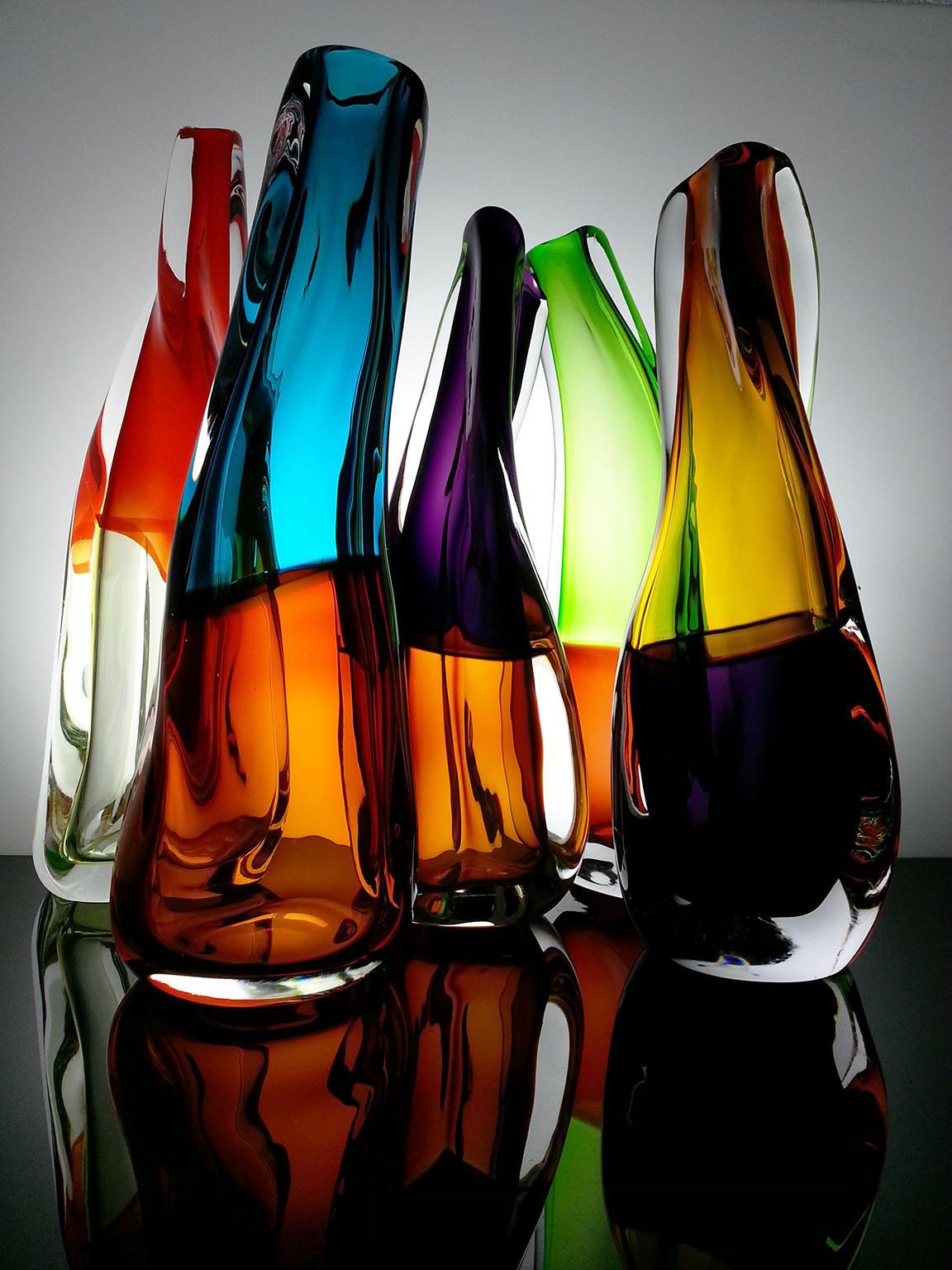
Terri Colledge
You work as a glass engraver. What was your pathway into that particular skill?
I was working at Okra Glass, a local glass studio, where I was initially enamel-painting on glass. Richard Golding, the studio’s co-founder, suggested that I look at the works in the cameo room in [what was then] Broadfield House Glass Museum. Cameo is glass that has been engraved through different coloured layers. Most of the museum pieces had a white opal overlay, which had been carved through. The thinner that layer is, the more colour underneath shows through, which is how the effect of shading is achieved. You have to be very skilled because of the co-efficiency of the glass cooling with a dark colour underneath and light opal colour on top. I thought it was wonderful. The studio had a setup with a dentist’s drill to use to make the engraving. It went from there.
What work are you most proud of?
It has to be the [2012] replica of the Portland Vase, the 2,000-year-old Roman glass in the British Museum, which is very dark blue with a white overlay and figures on it. How the Romans did it is astounding. Despite much discussion, nobody knows for sure how it was made. Years ago, they would have used hand tools such as sharpened metal. There was more lead in the paint then so it probably made it slightly softer. I use a dentist’s drill with water and air to get very fine detail. They still take a long time to do. Most pieces take many months.
Nature is a big motif in much of your work.
The natural world is my inspiration. The folds in the flowers, the centres, the stamens, the leaves – it lends itself very well to it.
What is the significance of the opening of the new Stourbridge Glass Museum to you?
It’s something to be so proud of, your heritage, where you come from, what’s been done before and now. Dudley and Stourbridge need that.
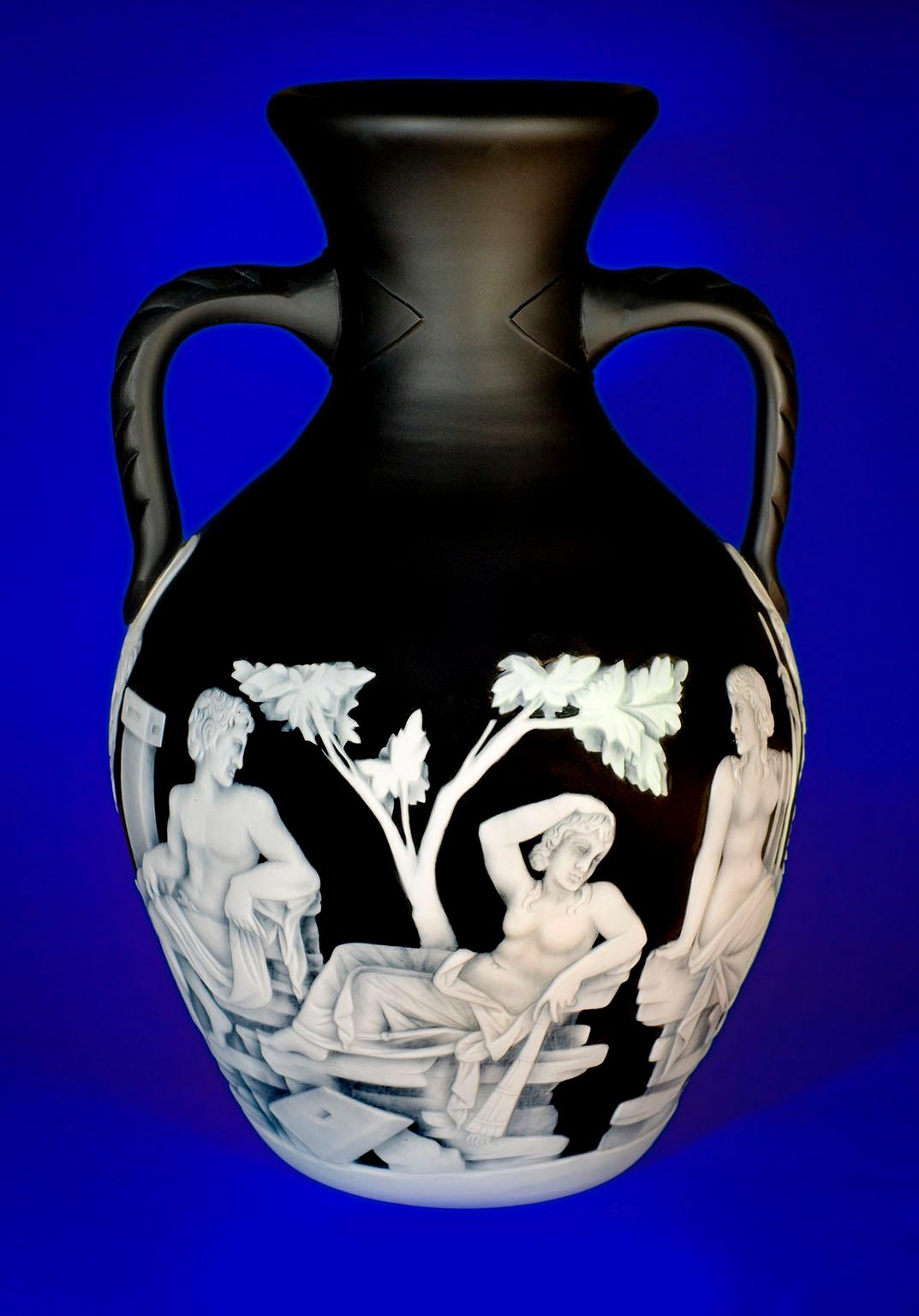
Helen Slater Stokes
What is your area of expertise and how did that develop?
I specialise in kiln-formed glassmaking, so that’s ‘warm glass’ processes – as opposed to blown glass, which is a ‘hot glass’ process, and ‘cold glass’ processes such as polishing and engraving. Within these cast pieces of glass there are these other worlds, which became the premise of my early work. These captured bubbles and colour streams reminded me of my childhood fascination with those chemical ‘Crystal Gardens’ science kits, where watery crystal worlds are grown in jam jars. This is where my interest developed in the space within glass and how virtual spaces could be created there.
The rural landscape has been a major subject for you. What does working in glass bring to the genre?
I love walking my dog across the fields or through forests. This is my best creative thinking time. Trees are markers within the landscape and, hopefully, they remain a constant within a place, even if the use of the land changes. My landscape-based works discuss our ability to attach emotional associations to places, spaces from our childhood, or environments that have personal resonance. I redraw the places as I remember them, reimagine the space, and capture this within the glass.
What works are you most proud of?
In 2021, I completed a PhD at the Royal College of Art, researching the ‘Optical perception of Image in Glass’. I developed original kiln-formed glassmaking processes that enabled me to fabricate lenticular glass lenses. These, in combination with optical digital-image processes, allowed me to create new, almost holographic imagery that sits within the glass. The works investigate space using more abstract minimal forms and reflect more recent pandemic-based associations with space, such as proximity, movement, sequencing, control and instability.
What do you love most about what you do?
I love opening the kiln to see what has happened in the firing. It could take anything from as little as three days to as much as three weeks to see exactly how the piece has worked out. That never gets boring.
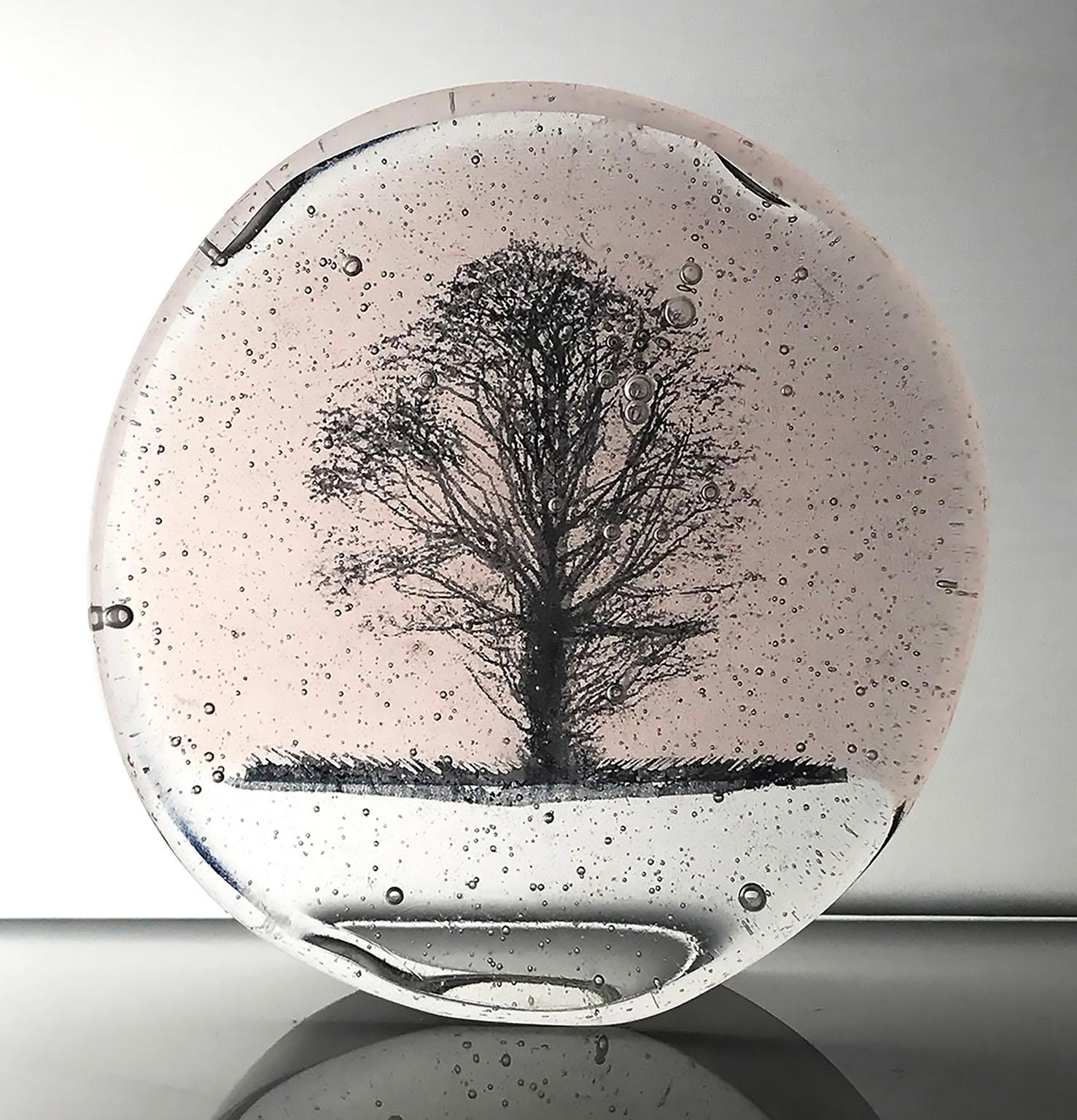
Chris Day
What is your area of expertise and how did that develop?
I’m a plumbing and heating engineer who also now makes glass and talks about racism. Those are my ingredients. My work is a hybrid of sculpture and the crafts of glassblowing and ceramics. I’ve used materials from my other job too: electrical wire and copper from plumbing, for example. Each piece is an experiment, and I don’t want to control glass or perfect a technique. I like to let the material do what it wants to do. It’s been a short rocket-ship ride for me: two years since my work was first spotted in Stourbridge. Now it’s in six major museums.
What works are you most proud of?
I’m most emotional about Emmett Till, which was acquired by the V&A in 2021. My work addressing racism came out of blowing glass into copper structures and seeing the tension the material was under. At the same time, I was reading about lynching and the history of slavery. It was the tension, not just of being strung up or burned, but of how society dealt with these issues – the rioting and the Civil Rights movement. Till [who, aged 14, was lynched in Mississippi in 1955, after being accused of offending a white woman] is a very important figure to me. The work is a way of dealing with my own tensions too, being mixed race and growing up without my father. My work has made me confident to talk about these things, and that’s what I’m proud of.
What do you love most about what you do?
Having a dialogue. The glass is 50 per cent of my art, the other half is having the conversation that comes out of it.
What are you most looking forward to with the new Stourbridge Glass Museum?
I’m hoping that it will bring in the things that I didn’t know, to show the contemporary side to what glass is and to change people’s mindsets.
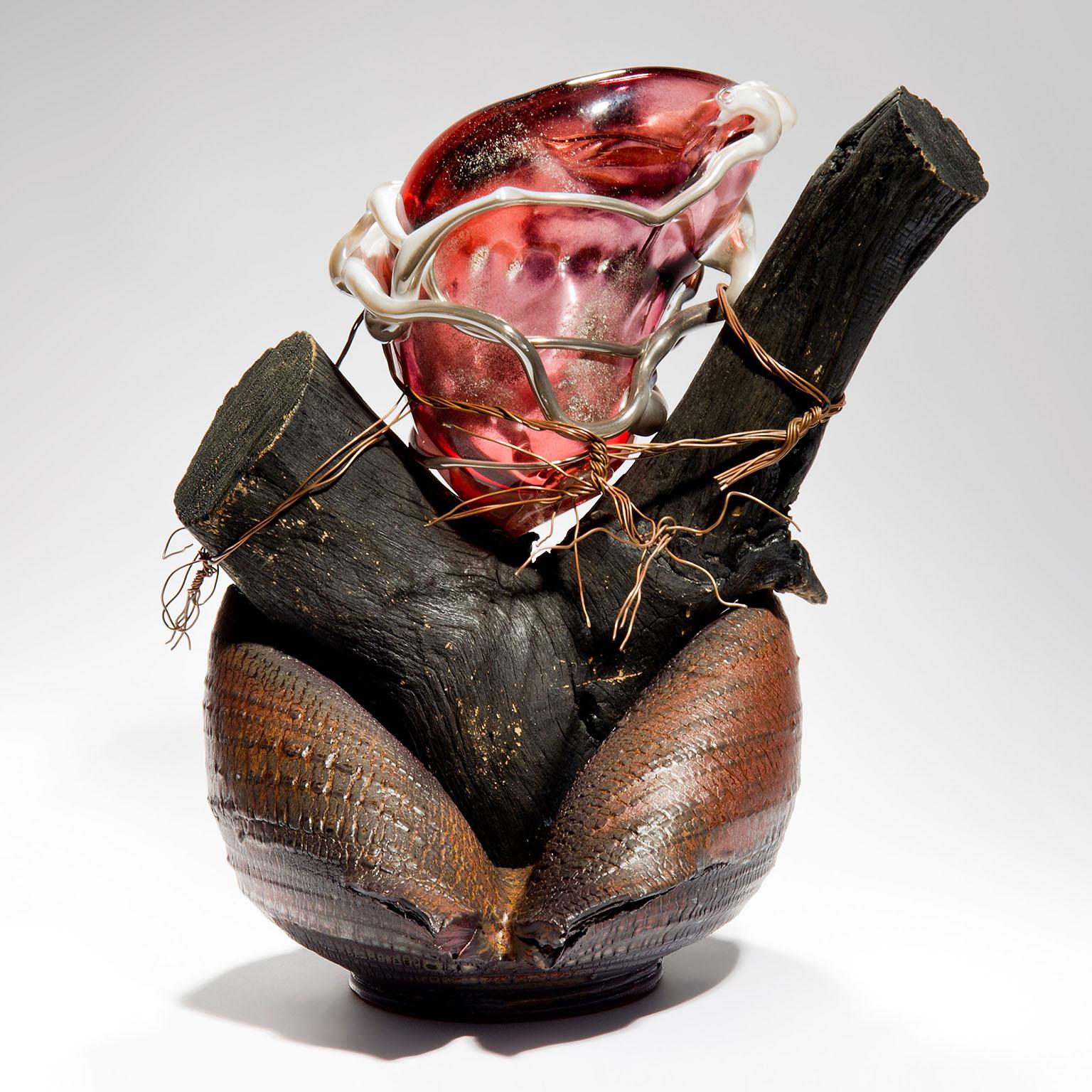
Find out more about the work of Vic Bamforth, Terri Colledge, Helen Slater Stokes and Chris Day at their respective websites.
Stourbridge Glass Museum, Stourbridge. Free with National Art Pass.
Each issue of Art Quarterly contains previews, reviews, long reads and artist interviews relating to current and upcoming exhibitions at museums, galleries and historic houses across the UK, as well as news on the impact of Art Fund’s charitable programme.
Become an Art Fund member to receive four issues of Art Quarterly per year and join a community of 130,000 art lovers enjoying free or reduced-price venue entry, and up to 50% off exhibitions, with their National Art Pass. Already a member? Renew your membership today.